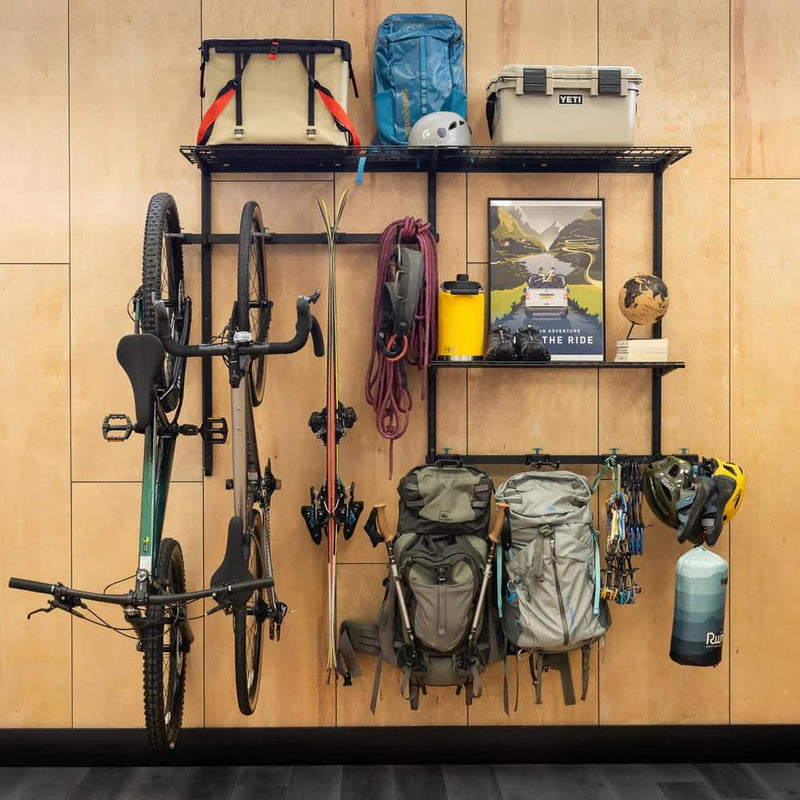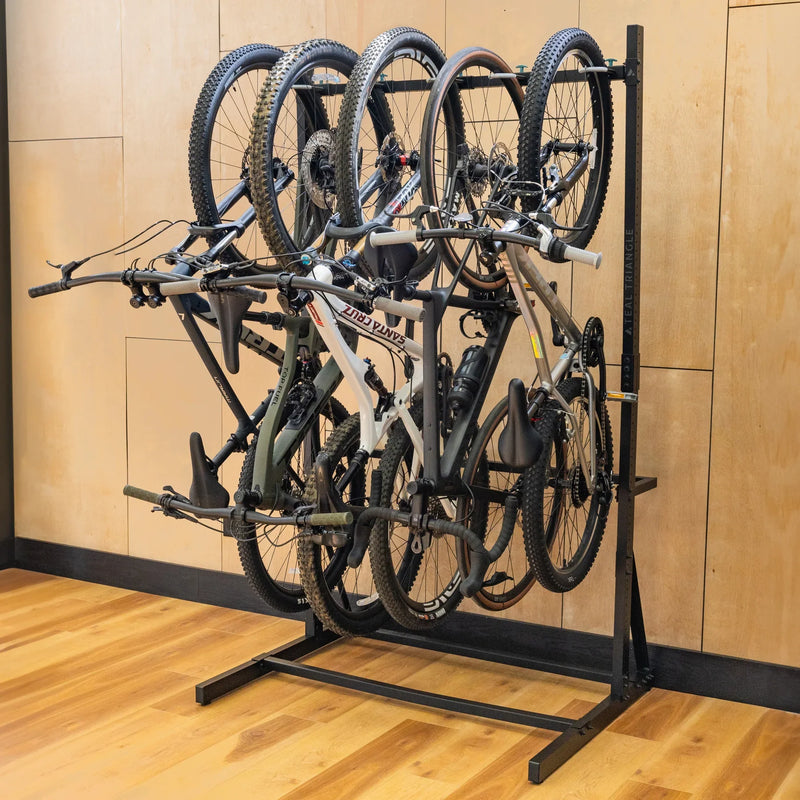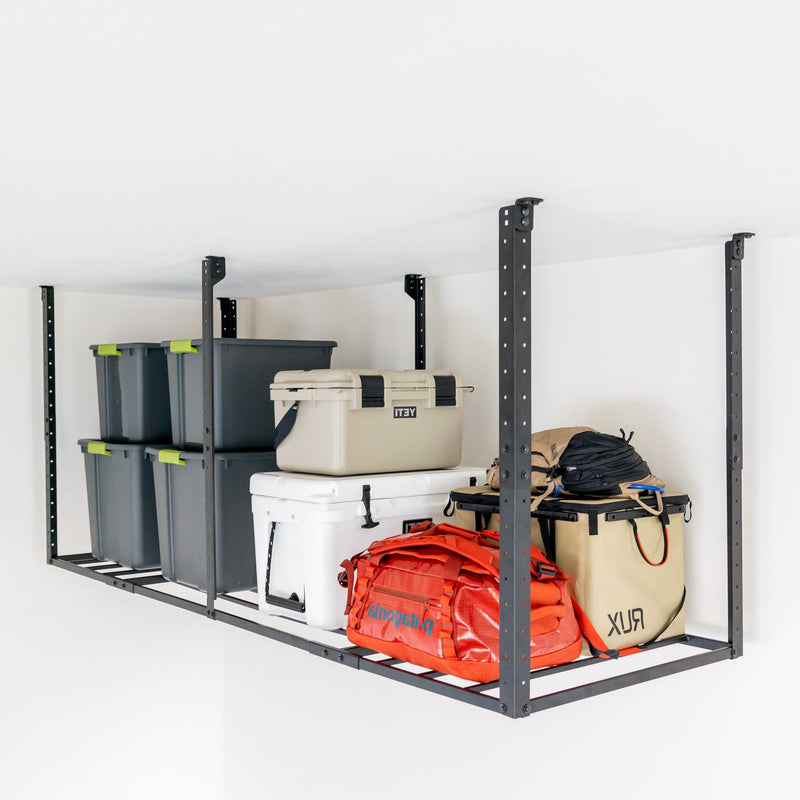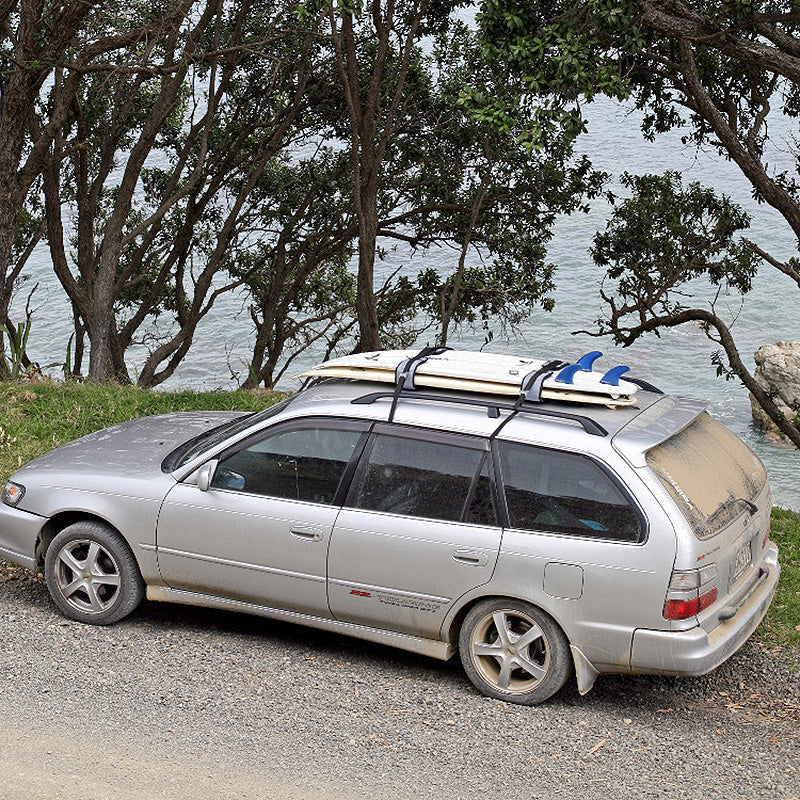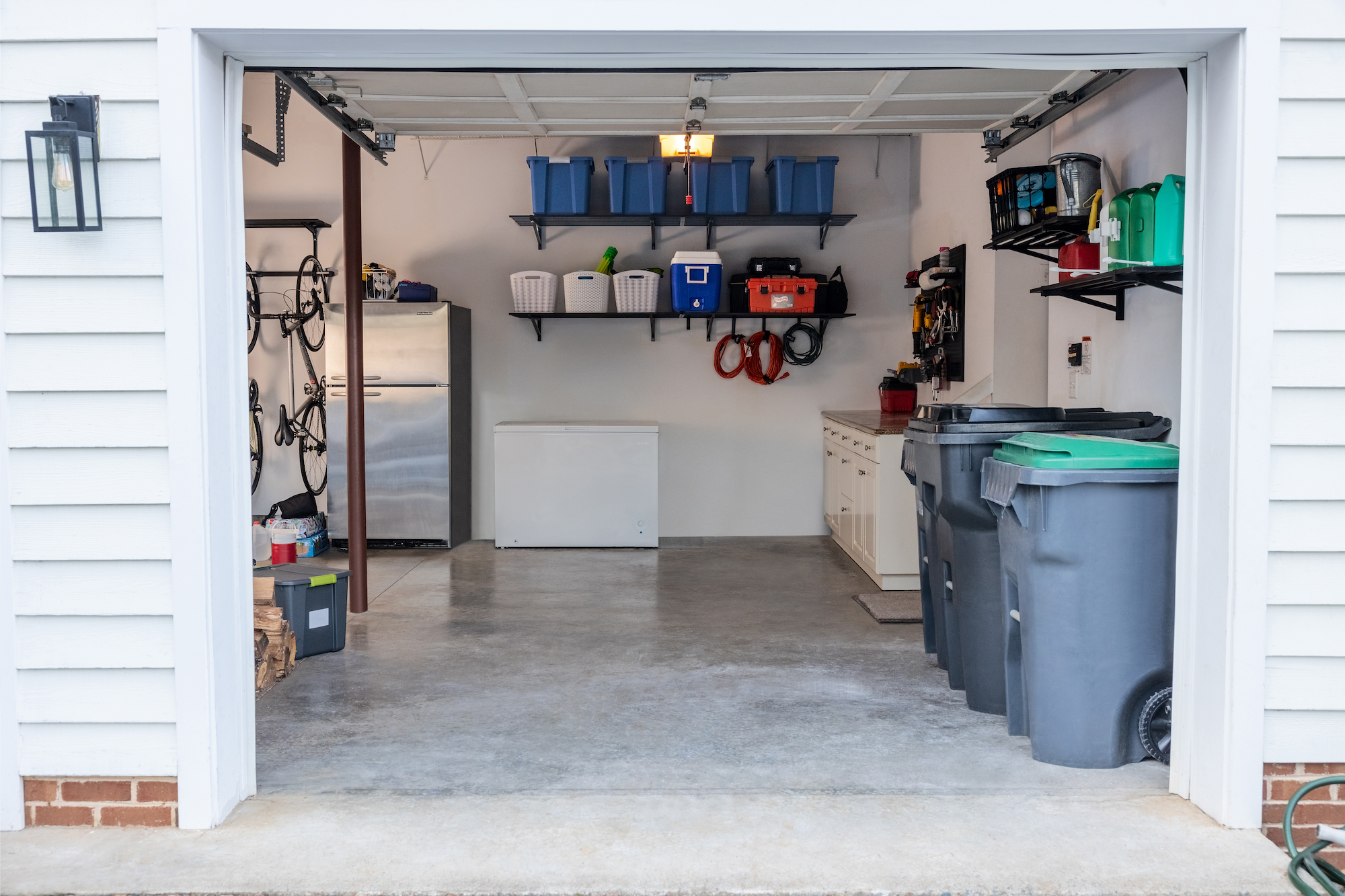The summer is winding down, and it's the perfect time to hit the water with a kayak.
The fall months bring cooler temperatures, while the water maintains warmth from the heat of the summer. The result is comfortable weather and temperate water for cruising with your kayak. So what do you need for venturing out on a kayaking trip? We've got you covered with all the information you need for transporting your kayak and essentials to the water.
Dry Bags

For an activity that takes place on the water, it is essential to have storage where your dry things can stay dry. That's the purpose of the dry bag—typically made from nylon, vinyl, or PVC, with a roll-top and buckle, it keeps your must-have travel items safe from water. If you pack extra clothing or a sleeping bag, you don't want to get to your destination and find out your things have gotten soaked.
Depending on the duration of your kayaking excursion, you may want different sizes of dry bags. For a 1-2 hour trip, a 5 or 10 L dry bag should suit you. If you're planning to spend the whole day on the water, you should choose a capacity between 10 and 30 L. If you're not sure which size to pick, find the biggest item you're going to pack, and make sure it fits inside. It's always best to size up and have more room than you need, especially because dry bags can't be filled to the top; they must have room for rolling the top down.
Another useful feature of the dry bag is its tie-downs for securing to the kayak. You don't have to worry about losing your gear if your boat tips over, and you don't have to take up space in the hatch.
Pro tip: if you have several dry bags, use a color coding system to tell them apart. This way, you won't have to unpack all of your dry bags to find the one item you're looking for.
Car Transportation
If you're not lucky enough to live right by the water, chances are you have to drive to another location to go kayaking. Kayaks are too big to be transported inside most vehicles, and not everyone wants to tow a trailer for transport, either. If this is the case, you'll need the right equipment for securing your kayak to your car. We have all the information you need to pick the best transport gear for you.
Crossbars

Crossbars are two bars that span the width of your car's roof—not to be confused with the roof rails that come installed by the factory on some car models. Roof rails are used for attaching racks, while crossbars and other roof racks are used for holding your gear. Roof rails cannot be used to hold your kayak on their own.
Crossbars are useful because they are universal. Whether you want the kind that attaches to roof, suctions to a bare car roof, or is secured by straps through the interior of the car, you can find a style that works for most kinds of vehicles.

One super convenient variation of the crossbar is the inflatable crossbar. It's a universal fit for most vehicles, and the inflation provides built-in padding for keeping your kayak (and your car) safe from damage. When not in use, you can easily detach, deflate, and fold them up for storage.
Foam Blocks

Soft foam roof racks can also be used universally for kayak transport. They can attach to crossbars or roof rails, or they can sit on a bare roof roof, secured by straps. You won't need any tools to use this style of roof rack; just the foam blocks and the tie-down straps are enough to keep everything secure. The blocks have a no-slip rubber coating on the bottom to prevent movement during use.
J Bars, Or Cradle Racks
This style of rack get its name from its "J" shape. When on the car roof, it holds your kayak at an angle to reduce the possibility of wind lifting it up. Installing a J bar rack requires existing bars, either factory-installed or installed after purchase. Some rack models come with universal clips to attach to any bars, wether they're round, square or oval.
Another important part of the J bar rack is the strap system. You'll want to make sure your kayak is secured to the car itself, not just the roof bars. The straps should run through the car doors, as well as at the bow and stern. Bow and stern lines are important to ensure your kayak doesn't slip forward or backward when you brake of accelerate.
Roof Rack Lift Assist

While almost anyone can kayak, not everyone is able to lift the full weight of a kayak onto a car roof. And you shouldn't have to! That's where the kayak lift assist comes in. They are the greatest invention for kayakers who need to lift their boat onto the car roof single-handedly, without causing damage to their kayak or car.
Lift assists come with a roller and lever-operated suction cups attached to their frame to secure the device onto most windows, hatchbacks, and trunks. The makers of kayak lift assists do their best to make them universal in a world with so many different styles of cars. A good lift assist will have multiple mounting positions so you can adjust it to fit the angle of your car. If they need extra help or have an especially long or tall vehicle, some people opt to get two lift assists to get the right angle for loading.

Many features are the same between different lift assists, but you'll want to keep in mind a few details about the vehicle you intend to use for loading: the configuration of the rear of the vehicle and whether or not your car has a spoiler are the two main considerations.

Since lift assists usually have several mounting angles, you will want to find the right setup for your vehicle before use. Whether you're loading your kayak from the near-horizontal trunk of a car or from the near-vertical back window, lift assists can help you get it done safely.
The frames of lift assists come in different shapes. If your car has a spoiler on the back, you will want to get a lift assist with an extra tall frame for the best clearance of the spoiler when loading.

So how do they work? Lift assists have a wide roller attached to the frame. When you put a kayak onto the roller, you can push it onto the car roof with ease. The roller often have a slight "V" shape to better grip the hulls of boats.
Kayak lift assists are compatible with any roof rack. Whether you use inflatable crossbars or a J bar rack, they can help you lift your boat in a safe and controlled manner. They not only protect you when attempting to load a kayak onto a rack, but they protect your car and its paint finish, too.
Kayak Carts
Kayaks glide easily on the water, but on land, they're a hassle to move to and from the water. Depending on your ability and what kind of kayak you have, it may be difficult to carry to the water on your own. We've got the best tools and tips for transporting any kayak from here to there as easily as possible.
When you use a kayak cart, you take some or all of the weight of the kayak off your hands, making your trip to the water that much easier. They're also useful if you want to load up your kayak with your gear: dry bags, fishing essentials, paddles, and more can sit in the kayak and go along for the ride.
Though kayak carts all serve essentially the same purpose, there are different styles of carts with varying features to consider. Some models may work better for the kind of kayak transportation you need.
Types of Wheels
- Airless Wheels - One of the most popular styles of kayak carts has airless wheels, so you never have to worry about getting a flat tire. They look like typical tires, but they are filled with rubber rather than air. When you're pulling the cart over unknown terrain, you'll want a sturdy wheel that won't pop if it goes over something sharp, leaving you stranded with your kayak. Airless wheels are strong and reliable for this purpose
- All-Terrain Wheels - A heavy-duty, all-terrain cart has larger bike wheels for transporting bigger boats, like tandem kayaks and canoes. The oversized tires make it easier for the cart to navigate curbs and other obstacles, since it keeps your boat higher off the ground.

- Beach Wheels - If you need a cart that can cruise on sandy beaches, get yourself a kayak dolly with inflated balloon wheels. Whereas other dollies' wheels will dig into the sand and get stuck, balloon wheels are larger and spread the weight of the kayak over a bigger surface area. Balloon wheels let the cart glide on top of the sand instead of digging themselves into a hole in the sand.
- Flat Plastic Wheels - Another option for transportation on the beach is the flat plastic wheel, which mimics the long tracks of machines like bulldozers and tanks. This type can work well for transport on sand. They are also airless, but they are made of plastic and are less rounded than rubber airless wheels.
Mounting Types

- Center Mount, or Platform Style - Some carts hold your kayak at the center, often with tie-down straps to secure it in place. These are known as center mount kayak carts. This style carries the weight of your boat for you, so it's ideal if you have trouble lifting or carrying heavy items long distances. Since they get the kayak higher off the ground, they are also good for transporting your kayak over different types of terrain. All-terrain carts typically have the larger wheels needed for curbs and other obstacles along the way. The downside to center mount carts is that they take longer to load up than end mount carts if you have to secure the tie-down straps.
- End Mount, or Tail Dragger Style - Another option is an end mount kayak cart. These are designed for quick and easy use. You won't have to strap in your kayak with this style. The major difference between the two is that, with an end mount cart, you support half the weight of your kayak when pulling it.

- Scupper Style - What is a scupper? Sit-on-top kayaks, like fishing kayaks, have drainage holes on the bottom that can be open or plugged, depending on whether you want the kayak to sit lower or higher on the water. Scupper carts have two pole. For kayak transport, stick these two poles into the two scupper holes on the bottom of your kayak.
To recap: center mount carts are ideal for heavier boats since they carry all the weight. They are also better for unfriendly terrain. End mount carts are ideal for quick loading, but you will have to support half the weight of the kayak. Scupper carts will work only for sit-on-top kayaks with scupper holes.
Kayaking With a Cart
Many kayak carts fold up for easy storage. If you want to take your cart along with you for portaging or to save a trip to the car, they can often be strapped to the deck or stowed inside.
Material
When you're bringing metal near water, rust is often a concern. Many carts are made from aluminum, which is lightweight as well as rust-proof.
Some kayakers may want a cart that you can roll into the water before unhooking it. If your kayak is loaded up with supplies for several days, or if you are unable to get your kayak from the shore to the water on your own, you may want to roll your cart straight into the water before unhooking it. This way, you won't have to do any heavy lifting, even when you get to the shore. Rusting may be a concern if you choose to do this, so you'll want to consider the material when purchasing a cart. Carts made of aluminum, rubber, and plastic will be ideal for using for this purpose.
Dry bags, kayak carts, car racks, and lift assists not only make it easier to get you and your kayak to the water, but they make kayaking more accessible, as well. If you weren't able to go kayaking before because you couldn't lift a kayak on your own, now you know that there are tools out there that can help you. To have the safest trip possible, you'll need your essentials secured. Whether that's the right kayak rack to fit your car or the right dry bag for your trip essentials, having the right gear allows you to worry less and enjoy you trip more.


